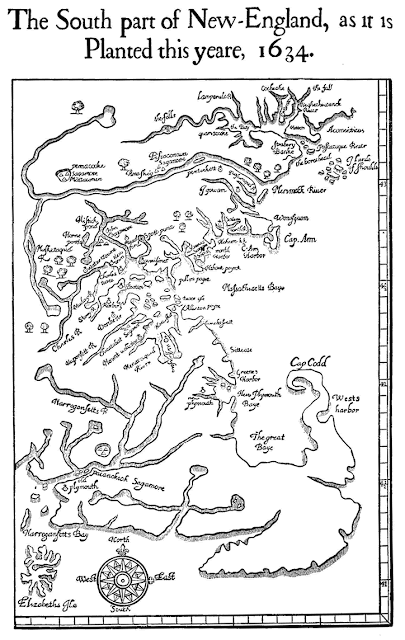Searching for Wampanoag Martha Simon
To illustrate Washashore, I've been working with both Photoshop and Sketcher to transform 17th, 18th, and 19th century oil paintings into black and white sketches. One of my characters is an elderly Wampanoag woman. After a lengthy search, I discovered an 1857 portrait by the famous Hudson River School painter, Albert Bierstadt, whose work emulated the image I had conjured in my mind. Bierstadt called the painting "Last of the Narragansetts," but he made a mistake. The Narragansetts are an Algonquian tribe from Rhode Island. The woman he painted, Martha Simon, was from Fairhaven, MA, and she was a member of the Wampanoag tribe - the perfect subject for my illustration. A year after Bierstadt painted her likeness, Martha Simon met Henry David Thoreau, who wrote about her in his journal. (You can read his journal entry below.)
Hoping to photograph the original portrait, I drove to Fairhaven's Millicent Library. Although the library itself is absolutely beautiful, the portrait was a disappointment.
Hoping to photograph the original portrait, I drove to Fairhaven's Millicent Library. Although the library itself is absolutely beautiful, the portrait was a disappointment.
Blackened with age, Martha Simon's face was almost impossible for me to see. Fortunately, one of the librarians was able to track down a postcard of the portrait for me to scan for this blog.
Here is an excerpt from the journal of Henry David Thoreau, dated June 26, 1856, a year before Bierstadt completed Simon's portrait. When Thoreau wrote this, he was visiting his friend Daniel Ricketson in New Bedford.
Excerpt found at http://millicentlibrary.org/henry-david-thoreau-visits-martha-simon/Heard of and sought out, the hut of Martha Simons, the only pure-blooded Indian left about New Bedford. She lives alone on the narrowest point of the Neck, near the shore in sight of New Bedford. Her hut stands some twenty-five rods from the road on a small tract of Indian land, now wholly hers. It was formerly exchanged by a white man for some better land, then occupied by Indians, at Westport, which he wanted. So said a Quaker minister, her neighbor. The squaw was not at home when we first called. It was a little hut not so big as mine. No garden; only some lettuce amid the thin grass in front, and a great white pile of clam and quahog shells on one side. She ere long came in from the seaside, and we called again. We knocked and walked in, and she asked us to sit down. She had half an acre of the real tawny Indian face, broad with high cheek-bones, black eyes, and straight hair, originally black but now a little gray, parted in the middle. Her hands were several shades darker han her face. She had a peculiarly vacant expression, perhaps characteristic of the Indian, and answered our questions listlessly, without being interested or implicated, mostly in monosyllables, as if hardly present there. To judge from her physiognomy, she might have been King Philip’s own daughter. Yet she could not speak a word of Indian, and knew nothing of her race. Said she had lived with the whites, gone out to service when seven years old. Had lived part of her life at Squaw Betty’s Neck, Assawampsett Pond. Did she know Sampson’s? She’d ought to; she’d done work enough there. She said she was sixty years old, but was probably nearer seventy. She sat with her elbows on her knees and her face in her hands and that peculiar vacant stare, perhaps looking out the window between us, not repelling us in the least, but perfectly indifferent to our presence.She was born on that spot. Her grandfather also lived on the same spot, though not in the same house. He was the last of her race who could speak Indian. She had heard him pray in Indian, but could only understand “Jesus Christ.” Her only companion was a miserable tortoise-shell kitten which took no notice of us [notice the cat behind Martha Simon in the painting]. She had a stone chimney, a small cooking-stove with fore legs, set up on bricks within it, and a bed covered with dirty bed-clothes. Said she hired out her field as pasture; better for her than to cultivate. There were two young heifers in it. The question she answered with most interest was, “What do you call that plant?”and I reached her the aletris from my hat. She took it, looked at it a moment, and said, “That’s husk-root. It’s good to put into bitters for a weak stomach.” The last year’s light-colored and withered leaves surround the present green star like a husk. This must be the origin of the name. Its root is described as intensely bitter. I ought to have had my hat full of plants.A conceited old Quaker minister, her neighbor, told me with a sanctified air, “I think that the Indians were human beings; dost thee not think so?” he only convinced me of his doubt and narrowness.










































